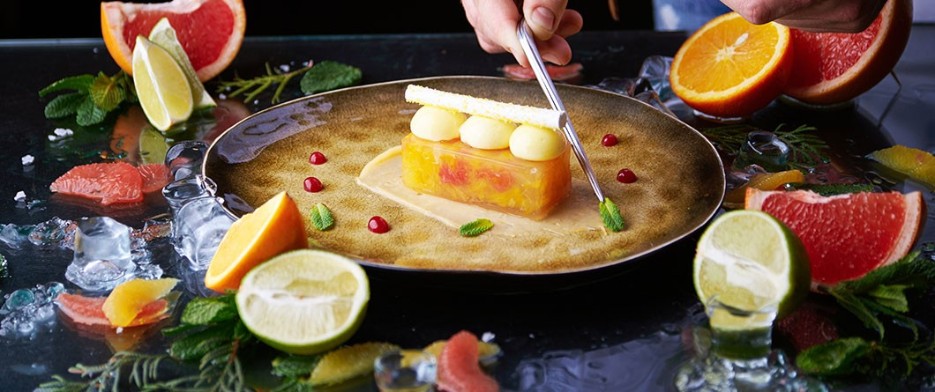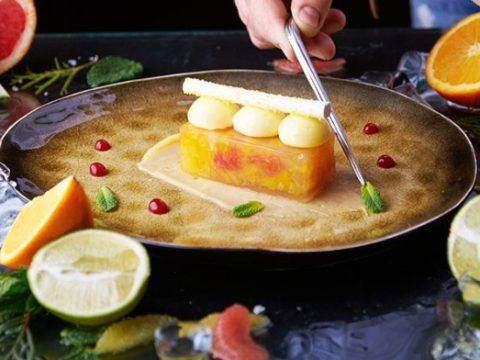Molecular Cuisine: What It Is and the Main Techniques Used
Imagine transforming ordinary garden tomatoes—sweet, juicy, aromatic—into a transparent consommé, effervescent jelly, or tiny “caviar” spheres of tomato. Welcome to molecular cuisine, where science and cooking blend to create surprising textures, presentations, and flavors.
What Is Molecular Cuisine?
Molecular cuisine applies scientific principles from chemistry and physics to reinvent the textures, flavors, and presentations of food. Chefs deconstruct ingredients and then rebuild them with precision using techniques such as emulsification, carbonation, and sous-vide cooking, resulting in truly unique culinary experiences.
Molecular Cuisine vs. Molecular Gastronomy
Molecular gastronomy is the scientific study of the physical and chemical processes that occur during cooking, often conducted in laboratories. Molecular cuisine is the practical application of those scientific insights in the kitchen, using specialized equipment and ingredients to push culinary boundaries.
Key Techniques in Molecular Cuisine
1. Emulsification
Normally oil and water don’t mix. By combining a liquid with emulsifiers (like lecithin, maltodextrin, or agar-agar) and infusing it with nitrous oxide in a siphon, chefs create ultra-light, flavorful foams that add drama and delight to any dish.
2. Powderization
When maltodextrin meets fat, it transforms into a powder—think bacon powder or powdered olive oil—that melts back into liquid on the tongue, releasing intense flavor in a novel form.
3. Carbonation
Beyond fizzy water, carbonating sugar or other ingredients under pressure adds an effervescent, playful texture to sweets and sauces.
4. Gelling
Using gelatin or plant-based gelling agents (agar-agar, carrageenan), chefs turn liquids into solid gels that can be sliced, molded, or shaped into spaghetti-like strands, cubes, or other imaginative forms.
5. Dehydration
Removing moisture from fruits, vegetables, or meats—using dehydrators or convection ovens—concentrates flavor, changes texture, and extends shelf life. Molecular chefs exploit this age-old technique in creative, modern ways.
6. Spherification
By mixing a liquid with sodium alginate and dropping it into a calcium bath, chefs create tiny spheres—like “caviar” beads—that burst with flavor. Tapioca pearls in bubble tea are a familiar example.
7. Deconstruction
Dishes are broken into their core components and reassembled in new configurations to highlight individual flavors and textures—think cheesecake served as a cheese foam, crunchy crust shards, and fruit gel cubes.
8. Edible Paper
Made from soy or potato starch, edible paper can be printed with food-grade inks or painted with natural food colors, creating whimsical, edible menus or wraps.
9. Liquid Nitrogen
At –196 °C, liquid nitrogen instantly freezes ingredients without forming large ice crystals, ideal for flash-frozen foams, sorbets, and dramatic “smoke” effects as the nitrogen vaporizes.
10. Sous-Vide Cooking
Sealing food in vacuum bags and cooking it at precisely controlled low temperatures yields unparalleled texture and flavor—tender egg yolks, silky proteins, and perfectly cooked meats.
Is Molecular Cuisine Healthy?
When used sensibly and with high-quality ingredients, molecular techniques are safe and can even enhance nutrition by preserving vitamins and flavors. Moderation is key—occasional avant-garde dinners are a delightful treat, but everyday cooking still relies on fresh, whole foods.
Whether you’re curious or courageous, molecular cuisine invites you to explore food in all its scientific wonder. Who knows—maybe you’re the next great molecular chef in the making!


